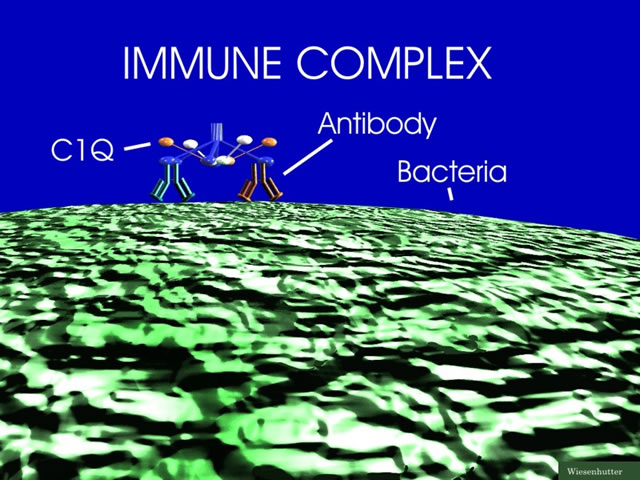U.C.L.A. Rheumatology Pathophysiology of Disease Course Lecture,
Second Year Medical School 1997

Movie: Complement destroys bacteria. 2.2 megs.
Avi:
![]()
The following are all 256K
Windows Media Player
Animation: SLE : Immune Complex Deposition : SLE is primarily an immune complex disease. The effects of an immune complex forming on a bacteria is animated.
QuickTime Media Player
Animation: SLE : Immune Complex Deposition
Real Media Player
Animation: SLE : Immune Complex Deposition
Figure 1. An immune complex is formed by the act of antibody binding to antigen which can result in activation of complement. The activation of complement is initiated by the binding of C1q to two antibodies through the Fc portion of the antibody. C1q is an enzyme which then catalyzes the activation of the next component of the complement cascade. The requirement for binding of two Fc portions helps to prevent unnecessary activation of complement, which could lead to injury of the tissue. The activation of complement is carefully controlled by the body as it is quite powerful, effective, and potentially dangerous. Many of the manifestation of SLE are a result of unregulated consumption of complement triggered by the formation of immune complexes. jpeg 640 x 480 pixels 88kbs